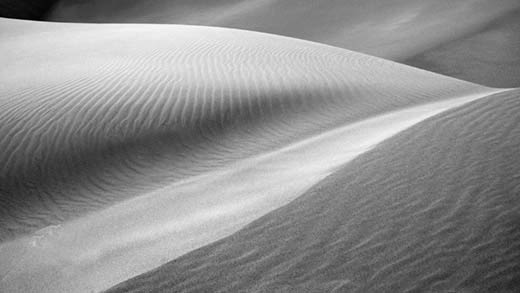The Basics of Digital Black and White Processing
Last week, I decided to make a video clip with a few tips about black and white digital photography. Then I decided that there were a couple more points that I’d better include at the same time. Then I thought that a couple of extra examples would help. In the end, what I had intended to be a 10 minute video ran about an hour and forty minutes.
The video primarily covers color to black and white conversion methods in Photoshop and Camera Raw, but I also discuss some toning and exposure adjustments for use after conversion, and I say a few words about the capture process as well.
If you don’t own Photoshop CS5 (and don’t want to spend the $650 for the full version) , much of what is done in this video can also be achieved in Adobe Photoshop Elements ($64, with rebate). Virtually everything that I’ve done in Adobe Camera RAW also has an analog in the “Develop” module of Adobe Lightroom; you’ll only miss out on the sections that require layer masks, I believe. And keep in mind that if you’re not using Photoshop professionally, you may be eligible for the full version of Photoshop with deep educational discounts ($190 from Amazon.com).
I hope that you enjoy watching it an learn a few things!
[PLEASE BE AWARE : This video was produced in high definition, and should be viewed at full size, otherwise it may be difficult to see what’s going on. Click on the HD icon in the Vimeo player above to enable HD, and enlarge the window to full screen, or download the video for offline viewing.]Watch on YouTube
Part One : Introduction, Overview, A Few Words on Capture, and Basic Conversion Methods
Part Two: More Photoshop Conversion Methods
Part Three: Photoshop and Camera RAW Conversion, Gradient Mapping
Part Four: Geek Out, Beginning of Landscape Examples
Part Five : Landscape Examples
Part Six : Landscape Examples
Part Seven : Conclusion of Landscape Examples, Beginning of Portrait Example
Part Eight : Conclusion of Portrait Example, Closing Credits
Want to Save a Copy?
If you’d like to save a copy of this video to your computer for offline viewing, you may. Probably the fastest way is to download the file from Vimeo. Simply follow this link to the video page, and then look for the AVI logo and download link below and to the right of the video. The file is roughly 950 MB, in Xvid format. You can also download the video directly from Light and Matter, here.




